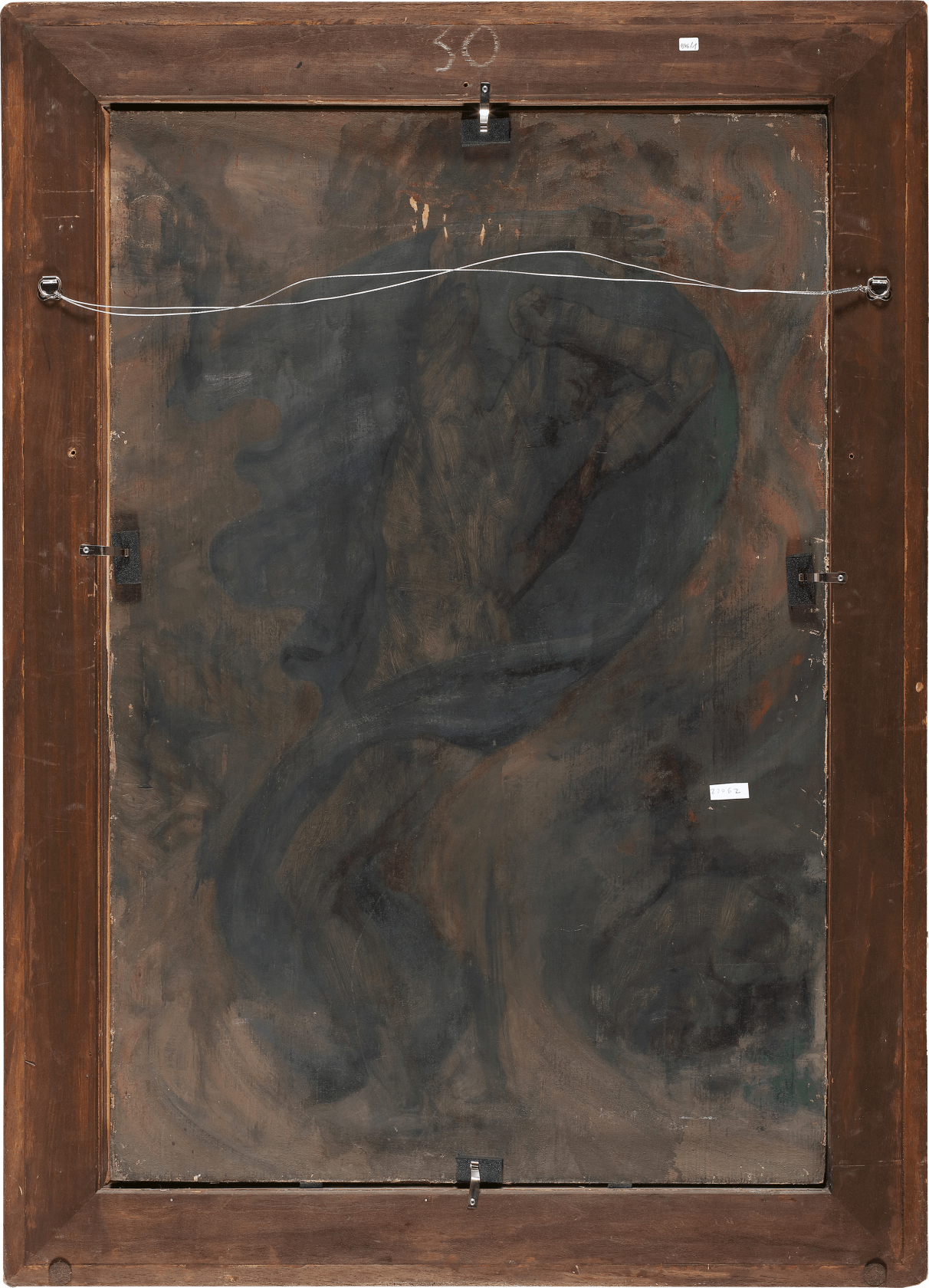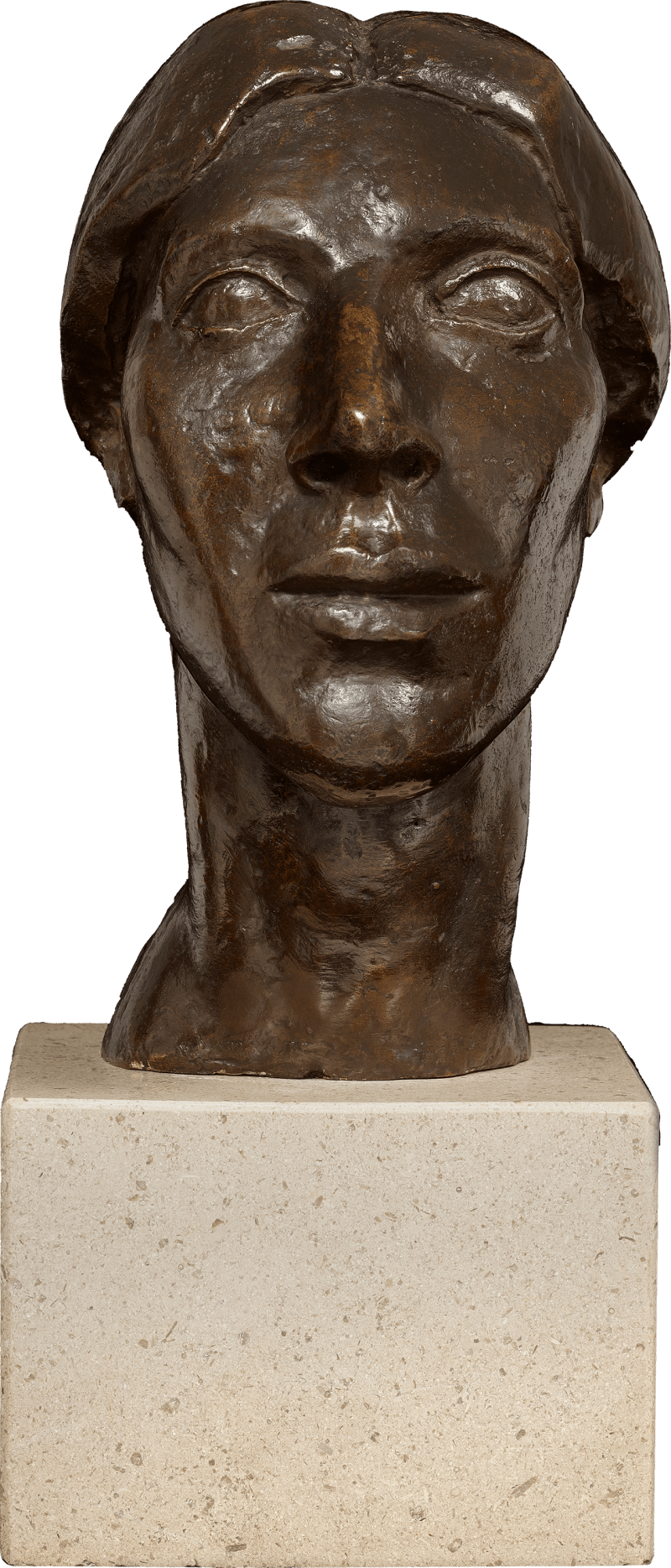Arthur Kampf was once among Germany’s most celebrated history-painters. He trained at the Kunstakademie Düsseldorf under Peter Janssen, moved to Berlin in 1889, and became entrenched in Germany’s artistic and institutional establishment, winning commissions for vast murals. Though he worked in an academic style for most of his career, this late portrait reveals a looser, more introspective side of Kampf’s practice.
Painted in the last years of the war, this reflective portrait reveals a more private dimension to Kampf’s work, far removed from the monumental tone of his official commissions. The sitter, unidentified, leans nonchalantly in a loose white shirt, his restless hair and downcast gaze conveying a mood closer to private contemplation than public triumph. The broad, flickering brushwork lends the painting a sense of immediacy, drawing the viewer into an emotionally charged interior world. The informality of the pose implies a sense of familiarity between artist and model, possibly a relative or student. Kampf’s handling here is looser...
Arthur Kampf was once among Germany’s most celebrated history-painters. He trained at the Kunstakademie Düsseldorf under Peter Janssen, moved to Berlin in 1889, and became entrenched in Germany’s artistic and institutional establishment, winning commissions for vast murals. Though he worked in an academic style for most of his career, this late portrait reveals a looser, more introspective side of Kampf’s practice.
Painted in the last years of the war, this reflective portrait reveals a more private dimension to Kampf’s work, far removed from the monumental tone of his official commissions. The sitter, unidentified, leans nonchalantly in a loose white shirt, his restless hair and downcast gaze conveying a mood closer to private contemplation than public triumph. The broad, flickering brushwork lends the painting a sense of immediacy, drawing the viewer into an emotionally charged interior world. The informality of the pose implies a sense of familiarity between artist and model, possibly a relative or student. Kampf’s handling here is looser and more gestural than in his highly polished commissioned works. The sitter’s clasped hands, the soft tension in his jaw, and far-reaching gaze invite psychological as much as visual engagement.
On the reverse of the board is a study for another composition – Chaos – a painting of identical dimensions but dramatically different subject matter [fig. 1 & 2]. It was not uncommon for artists to reuse boards and canvases, particularly during the war when supplies were scarce. Chaos was exhibited in Berlin in 1943, and again throughout the post-war period, in Castrop-Rauxel in 1949 and Aachen in 1950. The ghostly figure on the reverse, twisted in an upward spiral and partially obscured by swathes of fabric, recurs on large and small scale in a number of Kampf’s work at this period.[1]
Portrait of a Young Man complicates any easy black and white verdict on ‘official’ art under dictatorship. Kampf was deeply embedded within the Nazi cultural machine, yet this work refuses the aesthetic vocabulary of power and triumph. Instead, it captures a particular mood at what appears to have been a transitional point in his career. That same year, Kampf also painted a more menacing portrait of his son holding a devil puppet [fig. 2] a painting once rumoured (wrongly) to have been painted over an abandoned Hitler likeness. While the rumour was dispelled through X-ray analysis, it reveals the interpretive tension that now surrounds Kampf’s late work.
[1] Dr. Andreas Schroyen, (2022) Arthur Kampf (1864-1950). Eine deutsche Künstlerkarriere zwischen Kaiserreich und Nationalsozialismus. Inaugural-Dissertation zur Erlangung des Doktorgrades der Philosophie, durch die Philosophische Fakultät der Heinrich-Heine-Universität Düsseldorf, Düsseldorf 2022

















